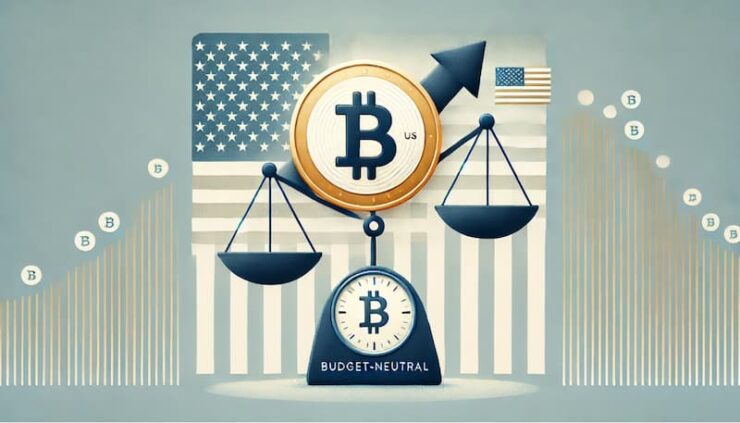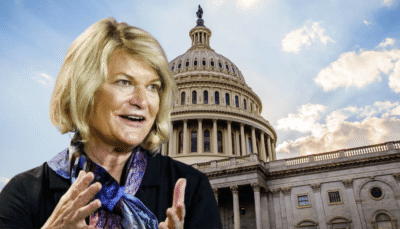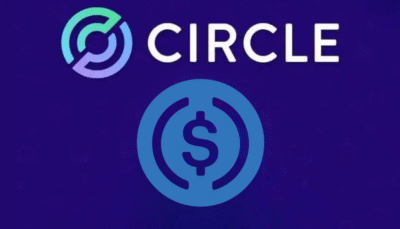In a bold move to reshape America’s financial strategy, investment giant VanEck has proposed a series of budget-neutral strategies that could allow the U.S. government to expand its Bitcoin reserves without adding a dime to taxpayer costs. As Washington wrestles with the implications of Bitcoin’s growing influence, these proposals could redefine how the government interacts with digital assets, potentially setting the stage for a major economic shift.
After President Donald Trump’s executive order to establish a Strategic Bitcoin Reserve, VanEck’s Head of Digital Assets Research, Matthew Sigel, shared a comprehensive analysis outlining how the U.S. could grow its Bitcoin holdings without impacting the federal budget.
One of the most intriguing proposals involves revaluing the country’s gold reserves, a move that would require congressional approval but could unlock substantial financial resources.
By adjusting the official valuation of gold, the government could free up additional capital to acquire Bitcoin while maintaining its existing gold stockpile.
Another strategy proposes issuing Bitcoin-backed bonds, a novel approach that would allow the U.S. Treasury to sell bonds above face value, using Bitcoin as collateral. The bondholders could then be repaid in either Bitcoin or U.S. dollars upon maturity.
This approach could attract institutional investors eager for Bitcoin exposure within a secure government-backed framework while reinforcing Bitcoin’s role as a recognized financial asset.
Banks and the Federal Reserve Step Into Crypto
Regulatory shifts under the Trump administration appear to be setting the stage for broader Bitcoin adoption. The Office of the Comptroller of the Currency (OCC) recently cleared federal banks to engage in cryptocurrency activities, including stablecoin transactions, custody services, and even participation in DeFi protocols, without prior licensing. This newfound regulatory openness could provide a smoother path for integrating Bitcoin into government financial strategies.
VanEck also proposed leveraging the Federal Reserve’s surplus policies to support Bitcoin acquisitions. Before 2015, the Fed maintained larger surpluses, but legislative changes capped these reserves. By reversing these limits, the Fed could allocate excess funds toward Bitcoin purchases—though this move would likely require congressional approval.
VanEck’s proposal extends beyond U.S. borders, suggesting that the government lobby the International Monetary Fund (IMF) to include Bitcoin in its Special Drawing Rights (SDRs)—a global reserve asset used to supplement the official reserves of IMF member countries. If successful, Bitcoin’s integration into SDRs could further legitimize it as a global reserve currency, compelling other nations to follow suit.
Such a move, however, would require intense diplomatic negotiations and major policy shifts at the IMF, making it a complex but potentially transformative strategy.
Selling Government Assets To Fund Bitcoin
Beyond financial instruments and regulatory adjustments, VanEck has floated a more unconventional idea: selling surplus government assets to fund Bitcoin purchases. Among the more eyebrow-raising suggestions is the sale of the government’s 1.4 billion-pound cheese stockpile, valued between $2 billion and $4 billion. While the cheese reserves are privately held, the U.S. Department of Agriculture (USDA) has the authority to sell excess dairy products without congressional approval, creating a direct, low-friction funding stream for Bitcoin acquisitions.
Another potential vehicle for Bitcoin purchases is the Exchange Stabilization Fund (ESF), a self-funded entity historically used for foreign exchange and economic stability interventions. Because the ESF operates outside congressional appropriations, it could provide a mechanism for Bitcoin accumulation without requiring new legislation.
Challenges and Policy Hurdles Ahead
While VanEck’s proposals present innovative ways to bolster U.S. Bitcoin holdings, most of these strategies face significant policy and regulatory challenges. Revaluing gold and modifying Federal Reserve surplus policies would require congressional approval, a notoriously slow and politically fraught process. Meanwhile, persuading the IMF to include Bitcoin in SDRs could take years of negotiations with uncertain outcomes.
Despite these hurdles, momentum is building for a more proactive U.S. Bitcoin strategy. Crypto Czar David Sacks recently revealed that the government lost over $17 billion by selling nearly 195,000 BTC over the past decade instead of holding onto the asset. Sacks criticized previous administrations for lacking a long-term vision for Bitcoin, arguing that strategic accumulation could have provided substantial benefits to taxpayers.
At the same time, President Trump has emphasized stablecoin legislation as a priority, with plans to establish clear regulations before Congress’s summer recess. This regulatory clarity could create a more predictable environment for Bitcoin and broader digital asset adoption.
The Bigger Picture
The VanEck proposal highlights a critical turning point in the U.S. government’s approach to Bitcoin. While past administrations have treated Bitcoin primarily as an enforcement issue, seizing assets through legal actions the new strategies suggest a shift toward strategic accumulation and integration into national financial planning.
Whether the government moves forward with any of these budget-neutral strategies remains to be seen. However, one thing is clear: the era of dismissing Bitcoin as a fringe asset is over. The U.S. is now actively considering how to incorporate it into its long-term financial framework, and the next steps could have profound implications for both markets and global geopolitics.





